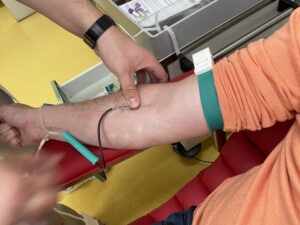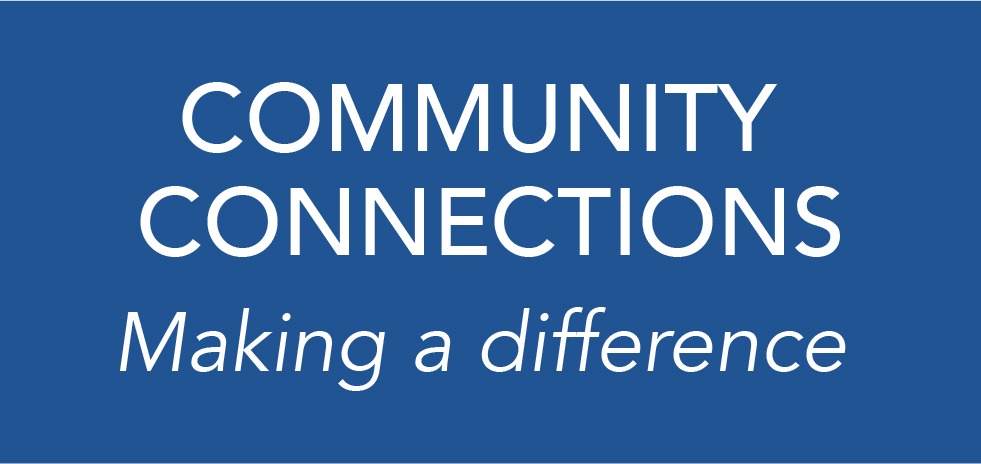Focusing on the Big Picture

Today’s seniors are living longer than ever, and their wellness routines are evolving to ensure each new year brings not only physical health, but also purpose and contentment. That’s why many senior living communities are taking a multifaceted approach to senior wellness.
According to a survey by the International Council on Active Aging, senior living communities are increasingly moving away from a care-first mindset and toward a wellness lifestyle with options for care available. 60% of respondents said that, by the year 2023, their retirement community will be based in a wellness lifestyle. To accomplish this goal, 5 types of wellness programs will increase within communities:
- Education and lifelong learning
- Exercise (led by both instructors and technology)
- Health education and disease management
- Food and nutrition education and preparation
- Intergenerational programs linking youth and older adults
Here are a few examples of how health and wellness trends in senior living are moving beyond a treadmill session and a salad, to include cutting-edge technology as well as ancient practices.
Tech Support
To create a holistic lifestyle, many communities are embracing smart technology. Wellness trends in senior living include everything from smart lights to help prevent falls and timed medication dispensers, to fitness equipment that lets you upload personalized workouts in the fitness center. Communities are also adopting telehealth, so their residents can have a doctor visit remotely, over video chat.
With the rise of wearable smart technology, like smartwatches, seniors can monitor important health markers regularly, whether it’s heart rate, heart rhythm or oxygen levels. And specialized apps can help monitor glucose levels, nutrition and stress levels. Many smartwatches can even detect if the wearer has fallen and, if the wearer is unresponsive, will automatically contact emergency services and predetermined emergency contacts.
While the emergency response is an added comfort, most older adults are using their smartwatches’ health reports to help with preventive wellness. This real-time feedback helps seniors make informed decisions to improve their health day by day. And the data can be shared with physicians, so they have thorough information for diagnoses.
Seniors in retirement communities are bringing this personalized information to the fitness coordinators to help design a plan to achieve their goals.
Stress Reduction
According to the American Institute of Stress, 77% of people report experiencing physical symptoms caused by stress in the past month, and 73% report experiencing psychological symptoms. Senior living communities are taking this phenomenon very seriously and are making conscious efforts to reduce residents’ stress for the sake of their health. They know chronic stress can lead to high blood pressure, heart disease, obesity and diabetes.
One way seniors are minimizing sources of stress is downsizing and simplifying their lifestyles to diminish everyday pressures and reap those long-term benefits. Independent living communities provide culinary, housekeeping and maintenance services to ease seniors’ everyday stressors. People over age 65 want turnkey solutions to help them travel, visit family and pursue their interests, and they’re finding those answers in the senior living lifestyle.
Alternative Wellness Techniques
In their pursuit of a stronger connection to their inner selves (in addition to stress reduction), many seniors are adding holistic practices, like massage, meditation and mindfulness to their traditional health treatments. And, unsurprisingly, they’re reaping added benefits.
In addition to relieving muscle and joint pain, massage has been proven to ease osteoarthritis pain, expand range of motion, lower blood pressure and strengthen the immune system.
Meditation is far more than a wellness trend, because the practice is thousands of years old, but modern research regarding its connection to overall health has created a resurgence in its global popularity. Meditation and mindfulness have been shown to have a positive effect on numerous medical conditions, including chronic pain, heart disease and high blood pressure. That’s why so many senior living communities have added practices such as yoga and tai chi to their activities calendars. Many communities are adding on-campus spas and meditation studios to encourage residents to pursue better physical and emotional health.
Lifelong Learning
Senior wellness includes mental workouts as well as physical workouts. Picking up a new skill or diving into a new subject matter can stimulate the growth of new brain cells and slow cognitive decline. But the benefits of continuing education are emotional as well as cerebral. Pursuing new knowledge has also been shown to combat depression and boost self-image.
Older generations are becoming such a statistically important demographic in higher education that certain colleges are adapting their practices to cater to seniors. They’re providing syllabi with larger print and asking professors to wear microphones during their lectures. And some states — like Texas, Florida and Minnesota — offer seniors discounted or free tuitions at colleges and universities.
Retirement communities regularly bring in guest lecturers and design on-site education plans. Some have partnerships with the Osher Lifelong Learning Institute to make it easy to take classes on a variety of topics. And for seniors who want to learn in a classroom, some communities have been built right on college campuses.
There are also great opportunities for older adults who prefer more informal educational experiences. Companies like MasterClass and The Great Courses offer video series that delve into various topics, from Foundations of Western Civilization to How to Play the Piano. And many senior living communities bring interested residents together to enjoy the content, adding a beneficial social component as well.
Gut Checks
Seniors and their health teams are thinking beyond calories when it comes to food. They’re looking more closely at how food fuels the body and how the right nutrients contribute to successful aging. Exciting research is coming out on the effect of the microbiome in gut health. Microbiome makes up bacteria in the stomach and intestines. Everyone’s microbiome levels are different, and certain bacteria can relate to diabetes, heart disease, multiple sclerosis and certain types of cancer.
Researchers continue to discover links between the gut and the brain, finding connections between bacteria and mental conditions such as anxiety, depression and dementia. Scientists are experimenting with new ways to influence gut bacteria, but for the general public, they recommend leafy greens, fruit and vegetables to provide necessary fiber.
Many seniors are speaking to their doctors and dieticians about daily diet choices they can make to target a healthy microbiome. Most senior living communities already consult with nutritionists to support senior health and wellness, and some are taking the initiative a step further. They’re making special efforts to integrate a farm-to-table approach to dining and even harvesting ingredients from their own community gardens when possible.
Creating a Lifestyle around Wellness
Today’s senior living communities are keeping their eyes on modern technology and upcoming breakthroughs in research. Many new health and wellness trends can improve daily life or promote longevity. The ultimate goal is to create a balanced and fulfilling lifestyle for residents today and in the future.
Senior living communities are constantly bringing in new activities and initiatives to promote their residents’ wellness. Use the community locator tool to find a community near you and learn more about their wellness programs.





















